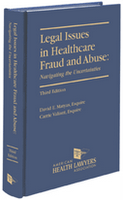
In a potentially far-reaching opinion on September 29 (and released today), the
NLRB (by a 3-2 vote) ruled that permanently assigned charge nurses are supervisors -- and therefore are a part of managment -- and ineligible for union membership. Here's the
"Daily Digest" version of the story from
Modern Healthcare:
The National Labor Relations Board ruled that certain full-time hospital charge nurses are supervisors and therefore ineligible to join unions in a case involving Oakwood Healthcare, Dearborn, Mich., and the United Auto Workers. The long-awaited decision creates a "broad new standard" for union membership, labor leaders said. The "immediate implications" of the case are "devastating to workers in the healthcare industry and potentially in other industries where professional employees direct or assign the work of others," AFL-CIO [link] President John Sweeney said in a statement [link].
The case is Oakwood Healthcare, Inc., No. 7–RC–22141 (pdf). It reverses a 2002 decision by the Acting Regional Director to include charge nurses in the bargaining unit, principally on the basis of the Supreme Court's decision in NLRB v. Kentucky River Community Care, 532 U.S. 706 (2001). In Kentucky River, another nurse-supervisor case, the Court rejected the Board's categorical exclusion from supervisor status of employees who exercise “ordinary professional or technical judgment in directing less-skilled employees to deliver services in accordance with employer-specified standards.” (This was the second time in a decade that the Court had spanked the NLRB for its analysis in a nurse-supervisor case. See NLRB v. Healthcare & Retirement Corp. of America, 511 U.S. 571, 579 (1994) (holding 5-4 that the Board erred in finding a nurse’s supervisory activity that was incidental to patient care was not exercised “in the interest of the employer”).)
Left to figure out what its standard should be after Kentucky River, the Board states: "exercising our discretion to interpret ambiguous language in the Act, and consistent with the Supreme Court’s instructions in Kentucky River, we herein adopt definitions for the terms 'assign,' 'responsibly to direct,' and 'independent judgment' as those terms are used in Section 2(11) of the Act. In a key paragraph, the Board writes:
Consistent with the Court’s Kentucky River decision, we adopt an interpretation of the term “independent judgment” that applies irrespective of the Section 2(11) supervisory function implicated, and without regard to whether the judgment is exercised using professional or technical expertise. In short, professional or technical judgments involving the use of independent judgment are supervisory if they involve one of the 12 supervisory functions of Section 2(11). Thus, for example, a registered nurse who makes the “professional judgment” that a catheter needs to be changed may be performing a supervisory function when he/she responsibly directs a nursing assistant in the performance of that work. Whether the registered nurse is a 2(11) supervisor will depend on whether his or her responsible direction is performed with the degree of discretion required to reflect independent judgment.
Webster's Third place a large role in the Board's analysis, which leads the Board to complain, somewhat defensively, "In interpreting those statutory terms, we do not, as the dissent maintains, blindly adopt 'dictionary-driven' definitions. Rather, we begin our analysis with a first principle of statutory interpretation that 'in all cases involving statutory construction, our starting point must be the language employed in Congress. . . . '"
Much is at stake in these cases involving professionals in the workplace, cases in which the Board is struggling to extend the scope of the NLRA -- a remedial statute -- but not beyond the limits of Congressional intent. As the dissenters point out:
Today’s decision threatens to create a new class of workers under Federal labor law: workers who have neither the genuine prerogatives of management, nor the statutory rights of ordinary employees. Into that category may fall most professionals (among many other workers), who by 2012 could number almost 34 million, accounting for 23.3 percent of the work force. “[M]ost professionals have some supervisory responsibilities in the sense of directing another’s work—the lawyer his secretary, the teacher his teacher’s aide, the doctor his nurses, the registered nurse her nurse’s aide, and so on" [quoting from NLRB v. Res-Care, Inc., 705 F.2d 1461, 1465 (7th Cir. 1983) (opinion by Circuit Judge Posner)].
In the view of the dissenting Board members, the Board has failed yet again:
If the National Labor Relations Act required this result — if Congress intended to define supervisors in a way that swept in large numbers of professionals and other workers without true managerial prerogatives—then the Board would be dutybound to apply the statute that way. But that is not the case. The language of the Act, its structure, and its legislative history all point to significantly narrower interpretations of the ambiguous statutory terms “assign . . . other employees” and “responsibly to direct them” than the majority adopts. The majority rejects what it calls a “results-oriented approach” in interpreting the Act. But the reasonableness of the majority’s interpretation can surely be tested by its real-world consequences. Congress cared about the precise scope of the Act’s definition of “supervisor,” and so should the Board. Instead, the majority’s decision reflects an unfortunate failure to engage in the sort of reasoned decision-making that Congress expected from the Board, which has the “primary responsibility for developing and applying national labor policy.” NLRB v. Curtin Matheson Scientific, Inc., 494 U.S. 775, 786 (1990).









